What happens when King Charles dies? Operation Menai Bridge will be triggered, along with some very specific protocols, according to royal experts.
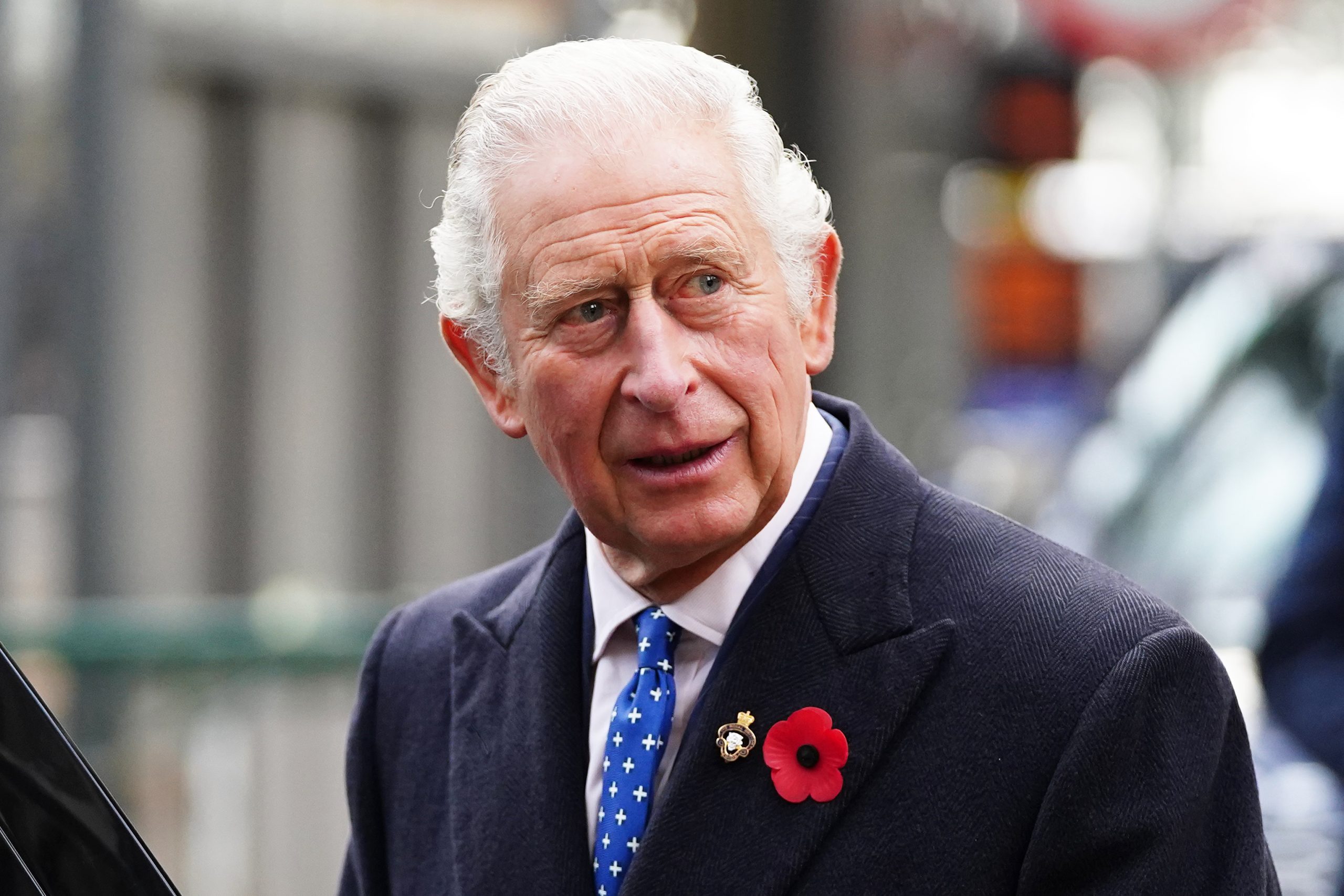
16 Things That Will Happen When King Charles Dies

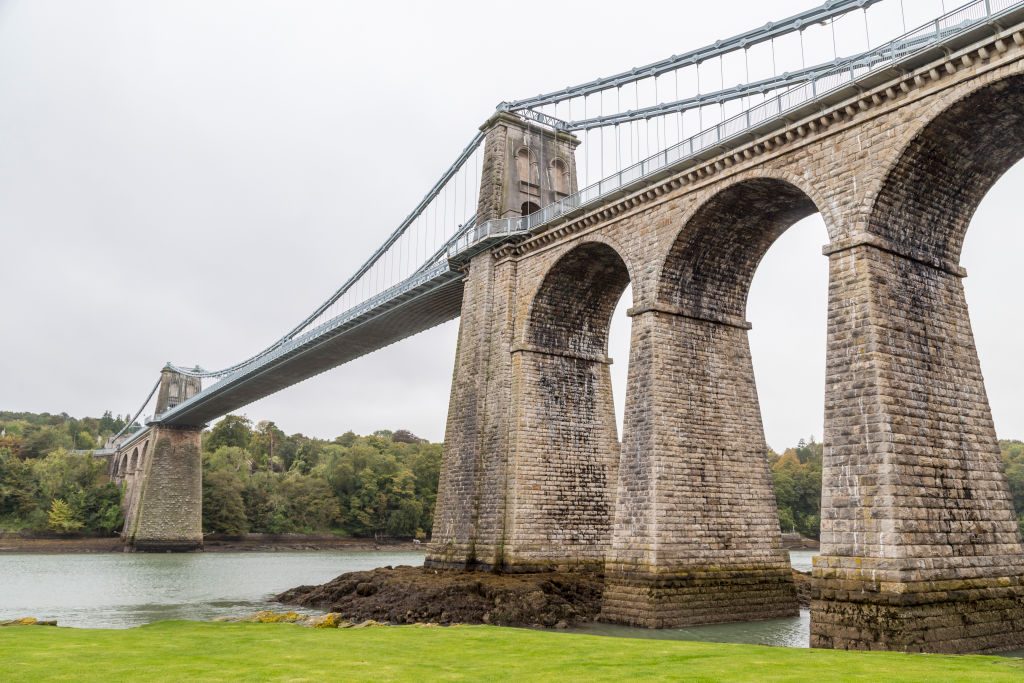
Operation Menai Bridge will go into effect
“Operation Menai Bridge” is the code name for the detailed plans that will be triggered when King Charles dies, to ensure that the public announcement and the state funeral run smoothly. If this sounds familiar, it may be because the name is similar to the one used for Queen Elizabeth’s death in 2022—Operation London Bridge. Gullace speculates that bridges are chosen as code words to symbolize “the idea of crossing over from the world of the living to the dead.”
Menai Bridge is a suspension bridge in Wales—in fact, the first iron suspension bridge in the world—and it spans the Menai Strait between the island of Anglesey and the mainland. Charles, who is known to have a strong relationship with Wales, studied Welsh at the University College of Wales and visited Wales every summer while he was prince. He is also the patron of many Welsh charities and organizations, so the choice makes sense. And if you’ve binge-watched The Crown, Menai Bridge might also ring a bell: It was mentioned in Season 4, Episode 9, when Charles cheated death in an avalanche accident at a Swiss resort in 1988 and his mother revealed the code word.

The prime minister will be called
As soon as the king dies, the palace will make a number of phone calls, all simply using the code words “Operation Menai Bridge.” According to Koenig, “the prime minister will be called first, followed by the government.” The Foreign Office will then inform the 15 governments where King Charles is head of state, and the 39 nations in the rest of the Commonwealth, where he is a symbolic figurehead.
Next, the news will go to the BBC, so they have the necessary time to prepare, but they are not allowed to announce anything until the palace does. All this happens while the extended family of the monarch is also informed. “Obviously, you want to make sure that the members of the family have been called beforehand rather than having them find out the sad news through the media,” Koenig says.
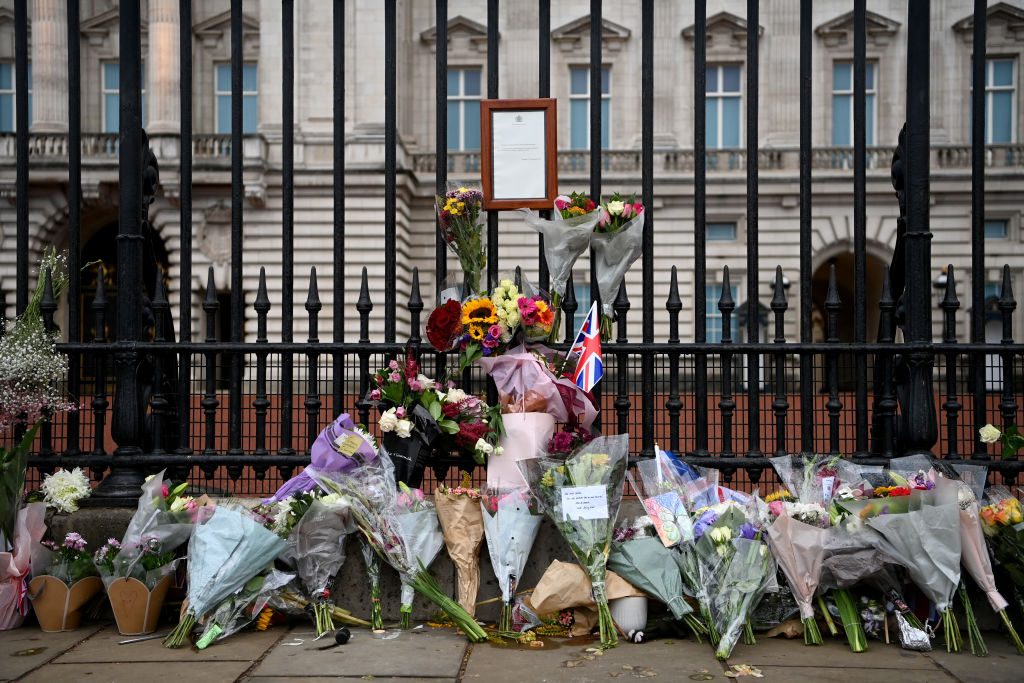
There will be a notice at the palace and on social media
As we saw when Queen Elizabeth II passed, the royal household now uses both ancient and modern ways to communicate the death of a monarch to the public. “There will be a notice at the gates of Buckingham Palace,” says Gullace, explaining that this tradition “goes back to the times when news was still spread by town criers and the notice would be there for those who might have missed it.” Obviously, today there are faster and more efficient ways to reach the masses, so at the exact same time the official notice is being put up, the news will also be revealed to the public through the press, as well as announced on the royal family’s website and their social media accounts.
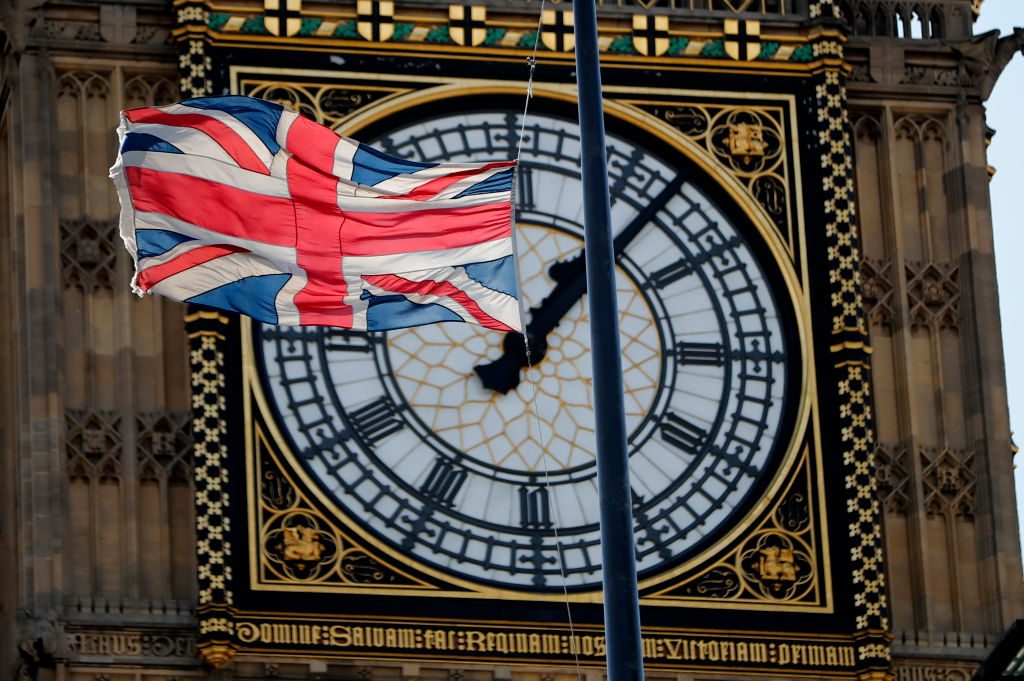
The flags will be lowered to half-mast and the bells will toll
Following the announcement, the nation will immediately enter a period of mourning, which will be visible throughout the country. “All the flags will be put in half-mast very quickly,” says Gullace. As the British government outlined when Queen Elizabeth died, the official flags, including the Union Flag, will stay at half-mast until the morning after the funeral; the only exception will be the day of the Accession Council, when the new king is formally proclaimed, and the flags wave at full mast for a short period of time. The only flag that will never fly at half-mast is the royal flag (called the Royal Standard), as a sign that there’s always a monarch on the throne. All non-official flags, such as the Rainbow Flag, should be completely removed and replaced by a Union Flag at half-mast, according to the official guidelines.
Church bells around the country will ring at the same time to mark King Charles’s death. Afterward, they will be muffled until the funeral takes place.
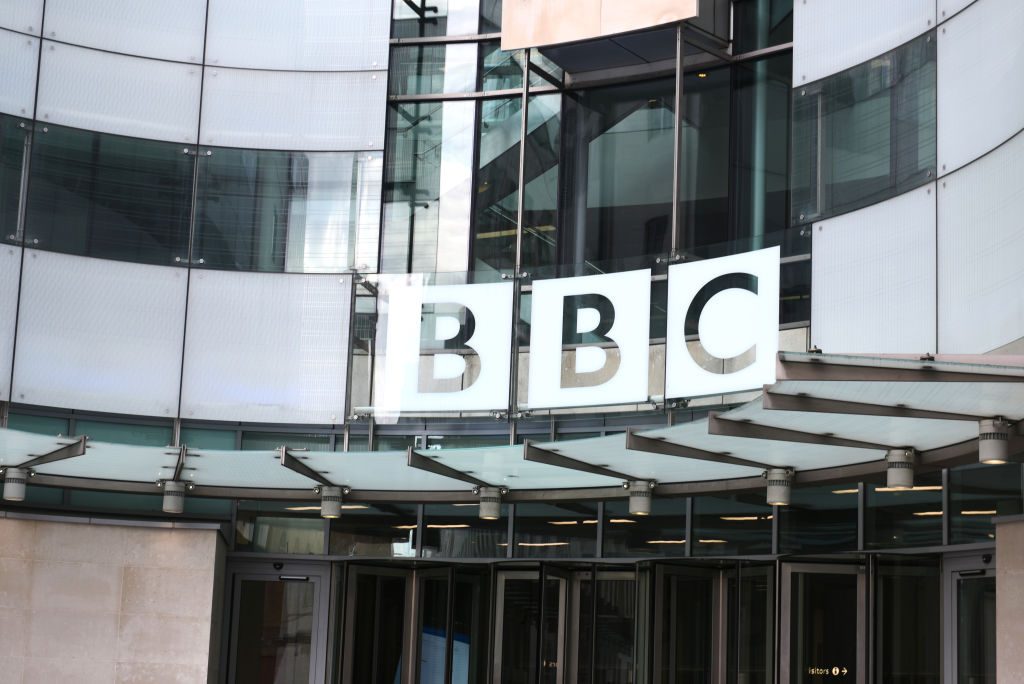
The BBC will air special programs (which are already prepared)
It goes without saying that the death of a sovereign is a huge national event, and the British media will want to get it right. “Following the initial announcement, the BBC will change its programming, and we can expect to see a lot of coverage of the king’s life,” Gullace says. “We will see him as a baby, playing polo, the highlights of his travels and his reign.” She adds that the BBC most likely started putting together archival footage the moment his mother died—or even before—to be prepared. What’s more, the TV presenters are expected to dress respectfully (think black suits and ties). Plus, “it’s common practice that the media have obituaries prepared for all the senior royals years in advance.”
Obviously, it won’t just be the BBC covering the monarch’s death in length. It will also be covered by every major media outlet in the U.K. (and the world), though the BBC’s coverage will likely be more extensive and reverent.
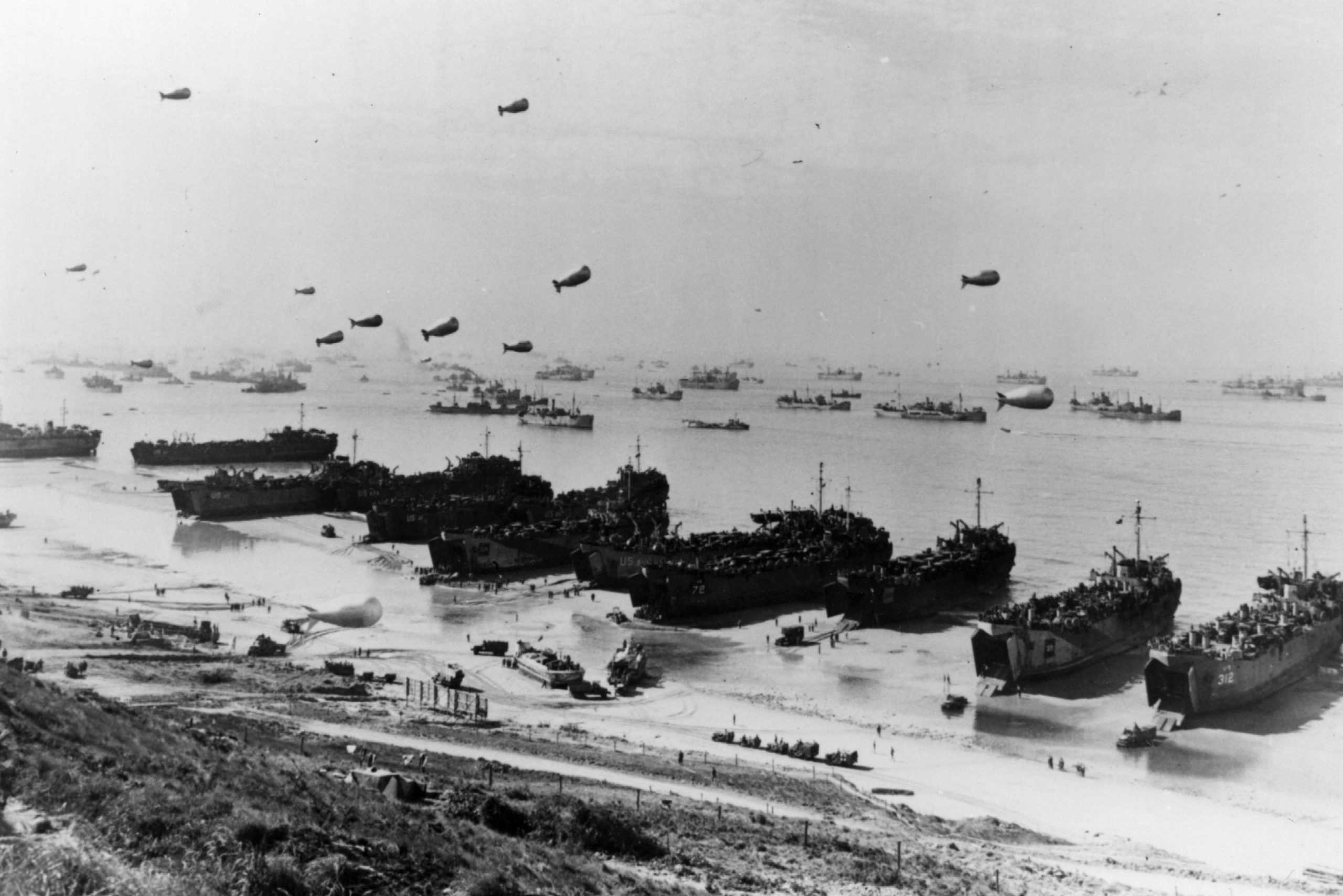
The mourning period starts on D-Day
Royal fans wondering what happens when King Charles dies might be surprised to learn that there’s even an official name for the day of his death. “The day a sovereign dies is called D-Day, just like the invasion of Normandy,” Koenig says. And until the funeral, there will be a new way of counting the days. “The day after the monarch’s death is D-Day +1, followed by D-Day +2 and so on,” she explains.
D-Day also marks the start of the official mourning period for the UK. When Queen Elizabeth II died, it lasted until the end of the day of the state funeral. The royal palaces were closed to the public, and while there was no official mandate to cancel events, many organizers did so anyway—football and rugby matches as well as concerts were postponed, while many theater performances started with the national anthem.
Following the wishes of King Charles, the royal family, their staff and the troops committed to ceremonial duties spent another seven days in official mourning after the late queen had been laid to rest. Ultimately, this decision will be made by William, who will be king once Charles is gone.
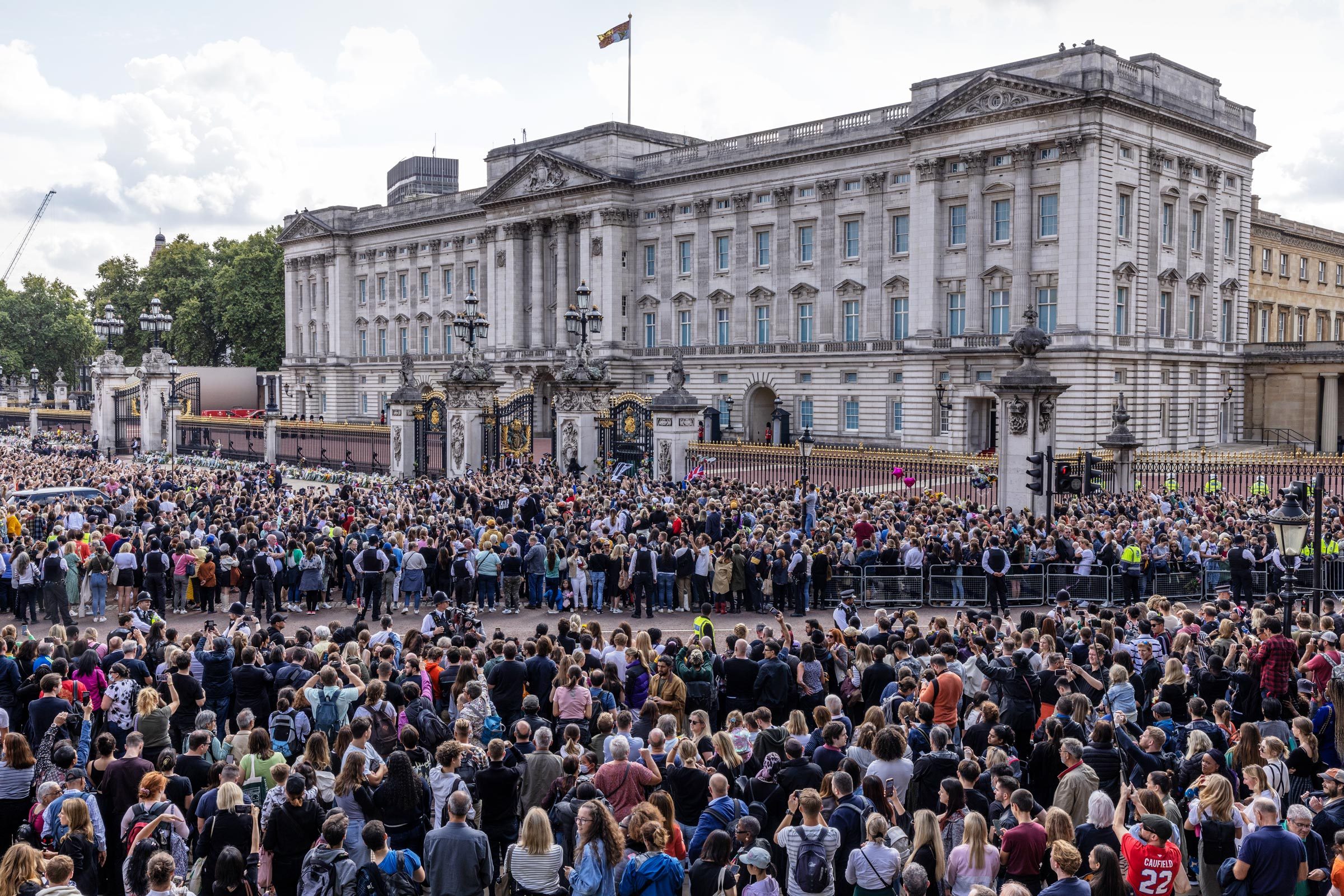
Crowds will gather at Buckingham Palace
Whenever there’s a significant event happening in the British royal family, throngs of people usually gather at Buckingham Palace to show their support. The most devoted royal fans may even fly into London from all around the country and even other continents following both good and bad news. This actually happened the day after King Charles revealed his cancer diagnosis. So, you might wonder, what happens when King Charles dies? You can safely assume that there will once again be huge crowds in front of Buckingham Palace.
When the media hinted that Queen Elizabeth II was unwell, royal fans gathered by the thousands all day long, with many more showing up after her death had been announced. In the days that followed, people waited in line for hours to place flowers in front of the palace gates, which were later moved to nearby Green Park by palace staff to make space for more. When Princess Diana died, mourners left 10 to 15 tons of flowers outside the royal palaces.
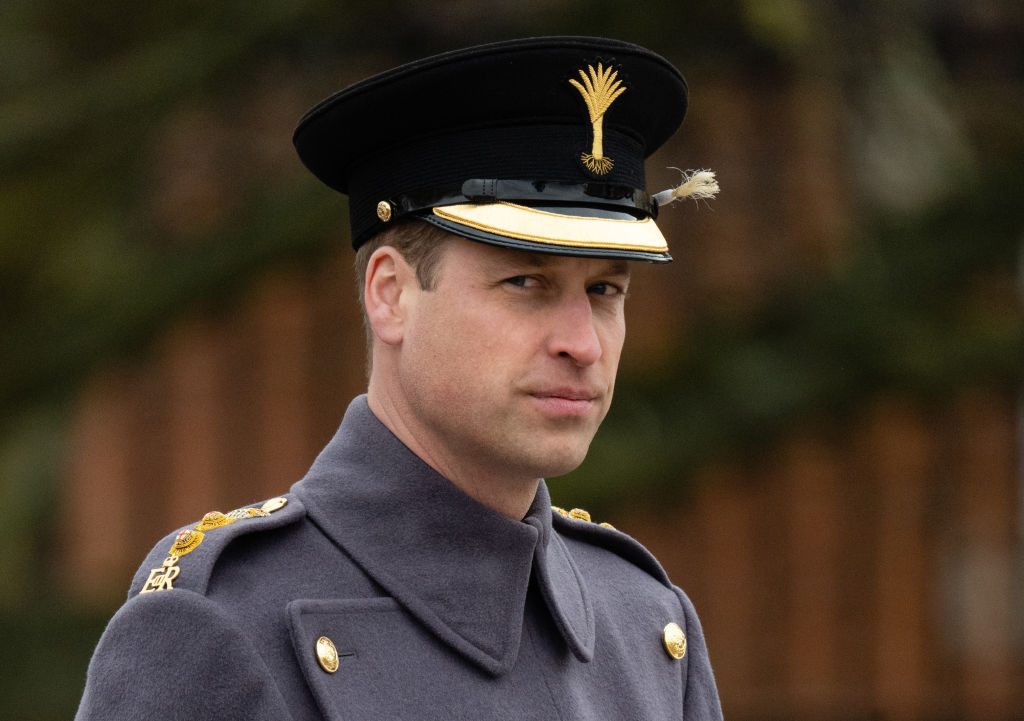
William will immediately become king
While King Charles’s coronation was a massive event watched by millions around the globe, the ceremony didn’t actually mark his first day as the U.K.’s new sovereign—and the same applies to William, who is No. 1 in the royal line of succession. “The minute his father dies, William is king,” explains Gullace. “The spirit of kingship descends upon him and the weight of the crown shifts to him, while the rituals will later affirm it.” That is in keeping with the British line of succession, as well as royal protocol after a monarch’s death.
The day after the king’s death, the meeting of the Accession Council will take place. “All the necessary documents will be signed, and William will swear an oath and be proclaimed King William V,” Koenig says. “He will then go out on the balcony of St. James’s Palace to address the public for the first time as the new king.” He will also probably make a televised speech shortly after, just as Charles did when he became the sovereign. According to both Koenig and Gullace, the official coronation might not take place for another year.
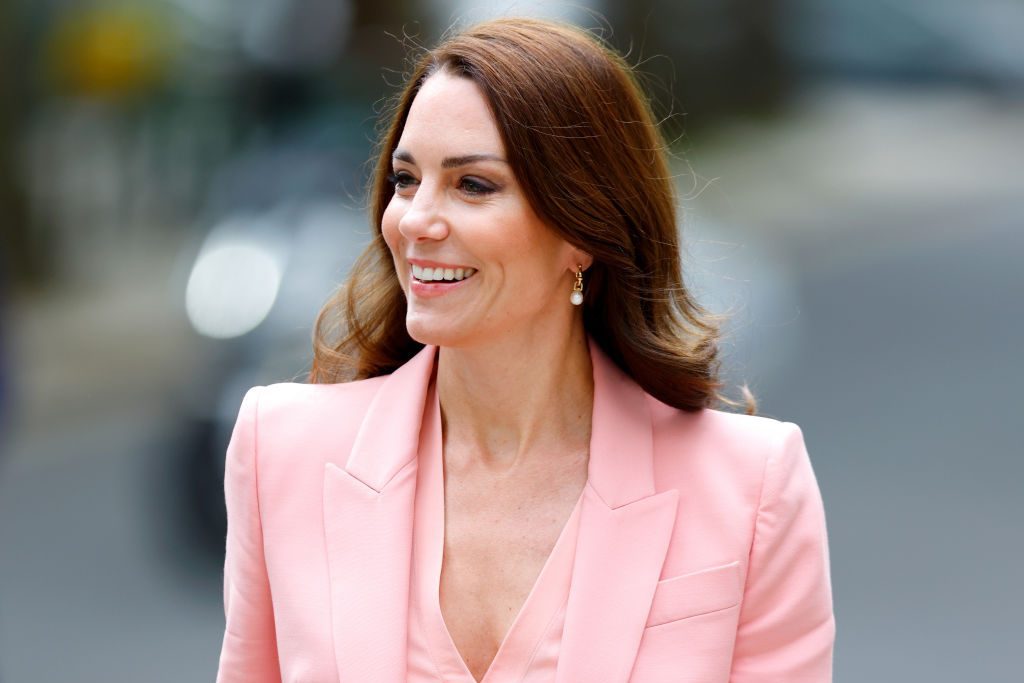
Kate will be queen consort
Kate, the current Princess of Wales, will automatically become queen consort, since she is married to William. “Consort” simply means that she is the wife of the monarch. Unlike a queen regnant—which Queen Elizabeth II was—the queen consort does not have any constitutional power, nor is she the head of state. Her task is to support the king as best she can in fulfilling all the duties that come with the crown.
Queen consort is mainly a title used on paper these days. In daily life, Kate will simply be referred to as Queen Catherine or—in less formal circumstances—Queen Kate.
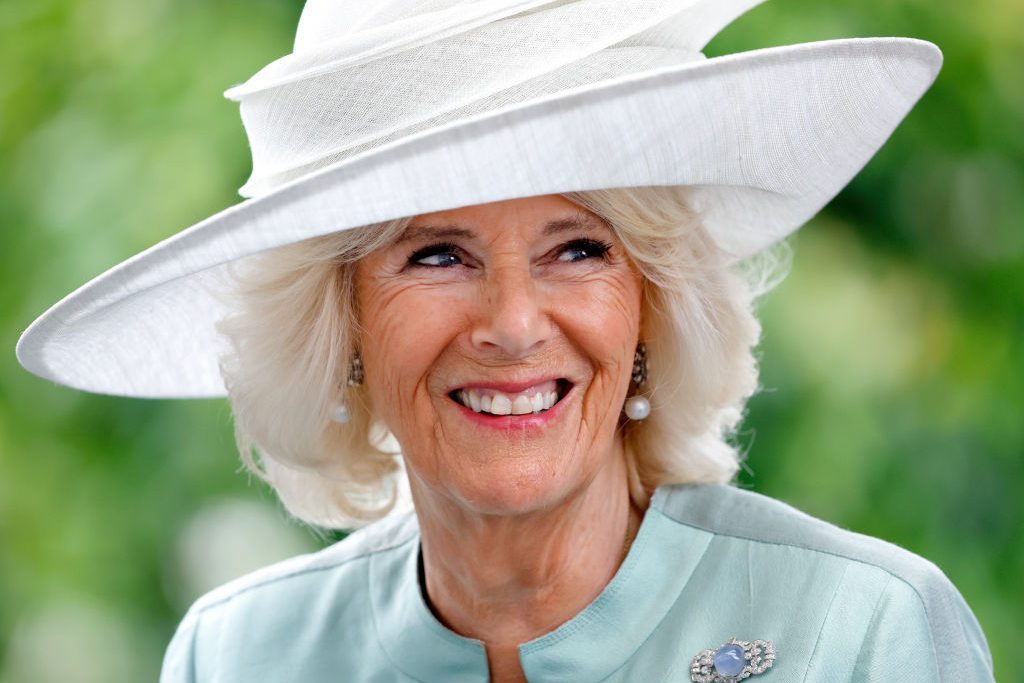
Camilla will (probably) become queen dowager
We can’t answer the question “What happens when Charles dies?” without thinking about the woman by his side. If Queen Camilla outlives her husband, she will most likely become queen dowager. “Dowager means that she is the widow of the last king,” Koenig explains. “She will always remain a queen and ‘Her Royal Highness,’ but she will no longer be the queen.” When Queen Elizabeth II inherited the throne from her father, her mother swapped her dowager title for “queen mother.” However, given that Camilla is not the birth mother of William, it seems safe to say that this will not be an option.
The decision about the title ultimately lies in the hands of William, as does the fate of many other aspects of Camilla’s life. That said, Koenig believes that she will continue to carry out royal duties such as charity events even if Charles dies before her.
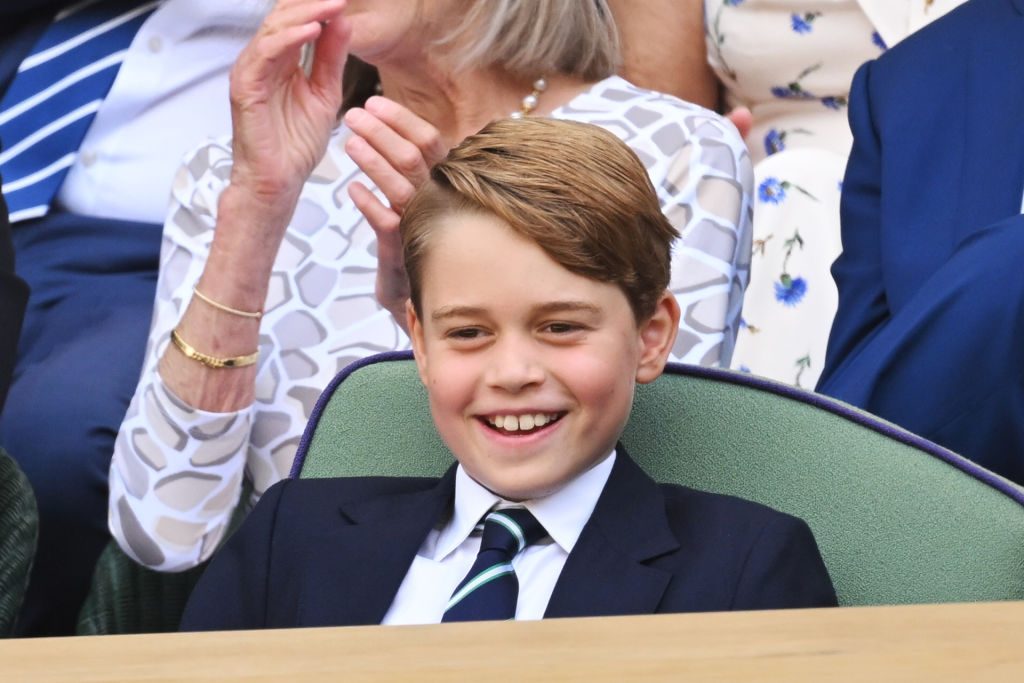
Prince George will get a new title
With his father now the new sovereign, William’s oldest son, Prince George, will not only further move up the royal ladder (see below) but also automatically receive a shiny new title. According to Koenig, “as soon as William is king, George becomes the Duke of Cornwall in England and the Duke of Roxburghe in Scotland. It will be up to his father if he immediately makes him Prince of Wales as well or waits.” Let’s remember: King Charles bestowed the title Prince of Wales to William (and Princess of Wales to Kate) in his very first speech following his mother’s death in September 2022.
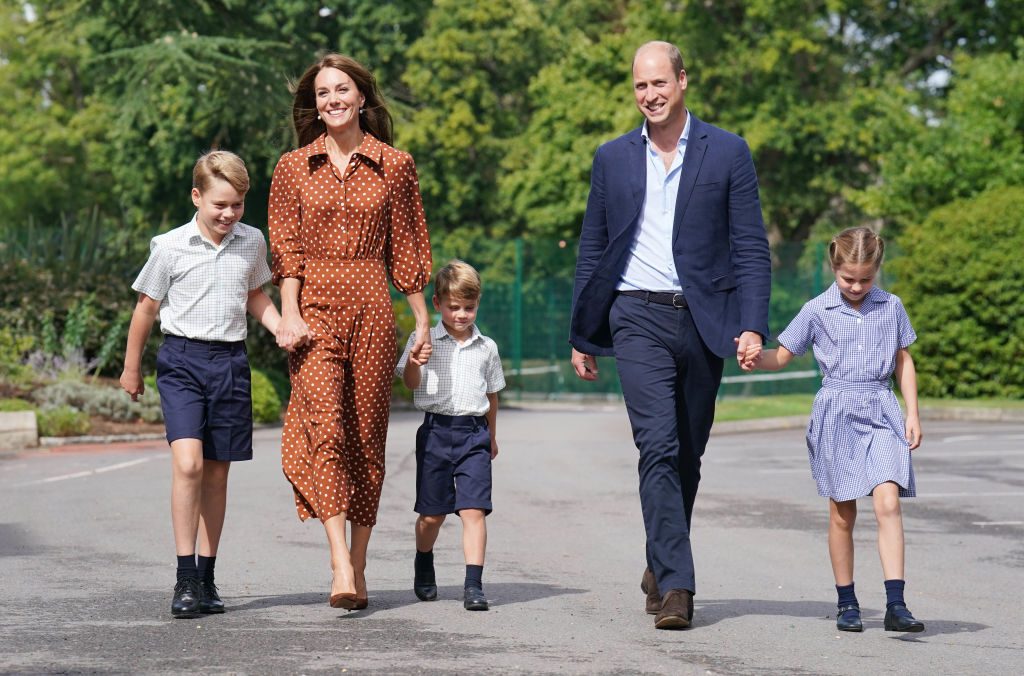
The line of succession will change
The death of a monarch naturally means changes in the line of succession. Prince George will become heir apparent, meaning he will now be first in line for the throne. His siblings, Princess Charlotte and Prince Louis, will become second and third in the line of succession after King Charles dies. Prince Harry will also move up one step and become fourth in line.
Considering the feud between William’s younger brother and most of the senior royals, which has been going on for years, many royal fans may be grateful that William is young, healthy and fit. However, as always, there are clear rules laid out if things go wrong. “In case some unlikely tragedy happens and George is still a minor when it’s his turn, there would have to be a regent in place—a person who acts for him as king until he is 18. This would be Harry,” explains Gullace, adding that “there may, however, be a strong desire to find a way to bypass him.”
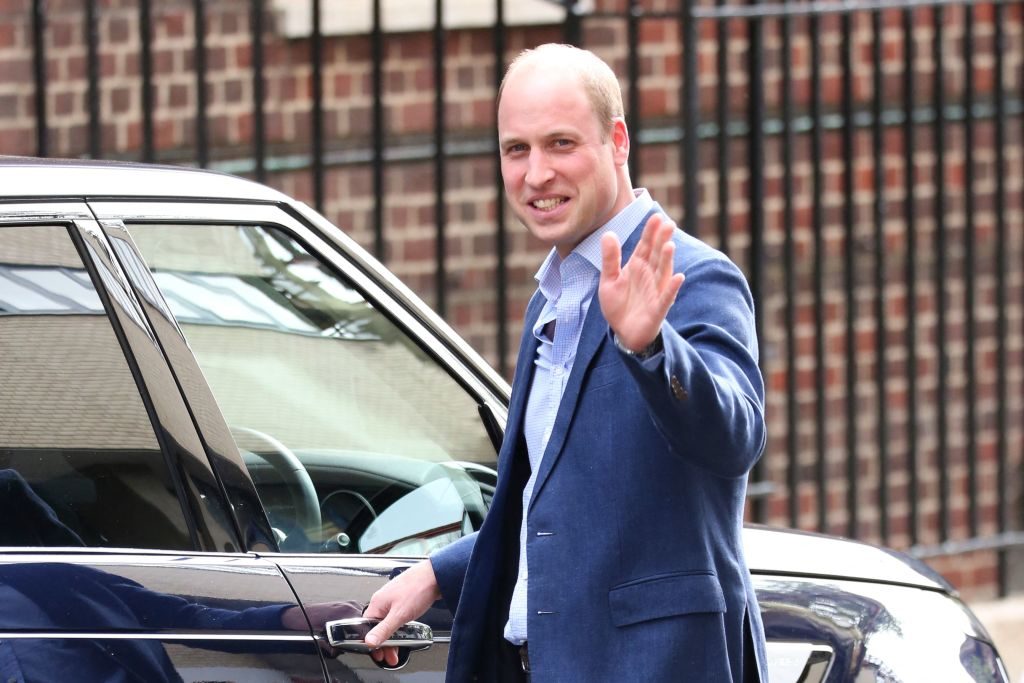
William will put on a brave face—and tour the nation
Even if he has just lost his father, William will be expected to put on a brave face to comfort the public. According to Koenig, he will tour the kingdom in the days following his father’s death and visit Northern Ireland, Wales and Scotland. He will also have to make an appearance in the capital.
“Charles set the tone,” Koenig adds. “When the body of the queen arrived from Scotland at Buckingham Palace, the car stopped, and he went straight to the people. This was a man who had just lost a parent, not just a sovereign—we always have to remember that. Yet, as the new king, you have to put your grief on hold as you meet people, who are also grieving.”
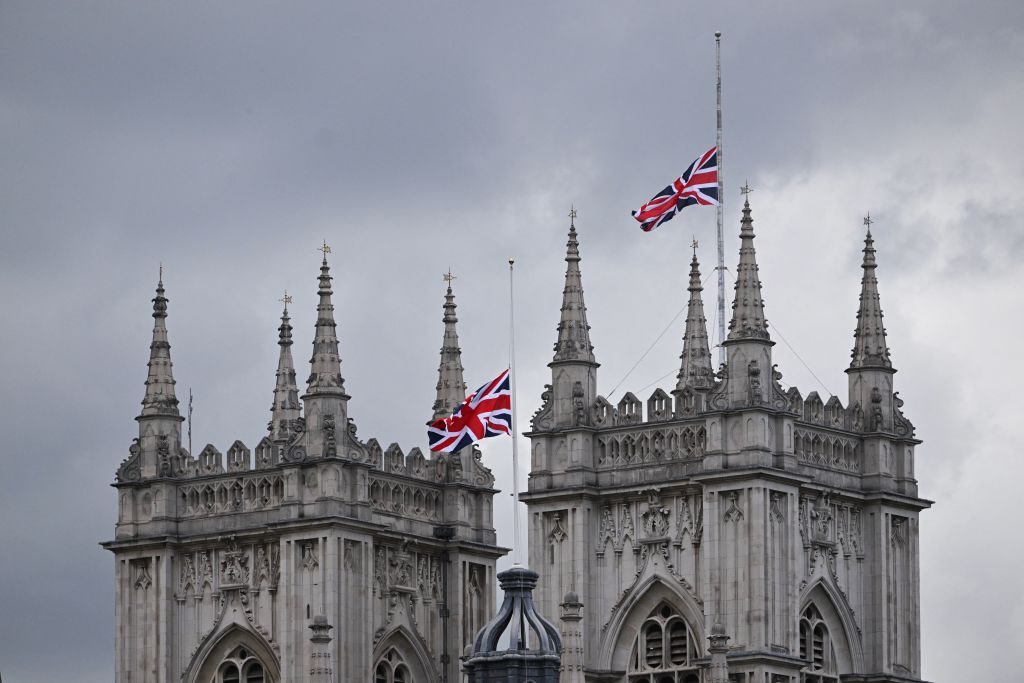
The king will lie in state
If you followed the coverage of Queen Elizabeth II’s death, you will remember the pictures of people waiting in line for the public viewing at Westminster Abbey prior to the state funeral. Some stood in the queue for more than 24 hours to bid farewell to the late monarch in person, and the line was 10 miles long at peak times. Reuters reported that around 250,000 people from around the world took part in what was simply called “the queue.” The most prominent may have been soccer star David Beckham, who waited for 13 hours to pay his respects.
So what happens when King Charles dies? Simply put, pretty much the same, as the public viewing is part of the official death plan. It’s obviously hard to say if Charles will attract the same crowds as his late mother. After all, she was on the throne for seven decades, and most Brits had never known a different monarch. However, Koenig is convinced some might underestimate the royalists: “People said there wouldn’t be masses at Charles’s coronation, but the outcome was huge. They had to close off the area earlier than for Elizabeth’s Platinum Jubilee.” And Koenig speaks from firsthand experience: She camped out near the palace for two nights to get a prime spot on coronation day.
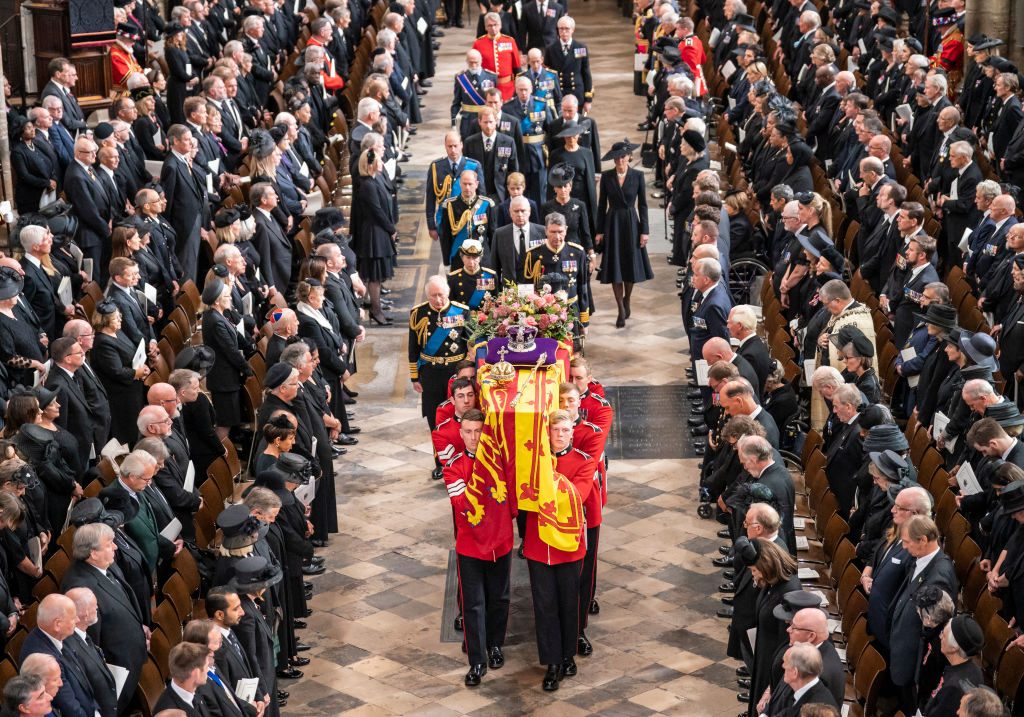
The king will have a state funeral
State funeral for a monarch usually takes place 10 days after his or her death—”unless it’s a Sunday, because apparently, you can’t have a funeral on a Sunday in the U.K.,” Koenig tells Reader’s Digest. The Duke of Norfolk will be in charge, because as the Earl Marshal, he arranges all the major state events, including funerals. Both Koenig and Gullace are convinced that Charles is actively involved in fine-tuning his own funeral, choosing the songs, the route and the military bands he wants to play, as well as adding personal touches. Gullace points out that Prince Philip had made it “one of his hobbies to work on his own funeral and design the Land Rover that would later carry his casket—apparently, he quite enjoyed it.”
The state funeral, during which hundreds of thousands of people are expected to line up along the route in central London, will be broadcast live around the world. The late Queen’s was watched by 28 million people in the U.K. alone. Queen Elizabeth’s funeral day was also declared a national bank holiday, so it’s very likely that Charles’s will be too.
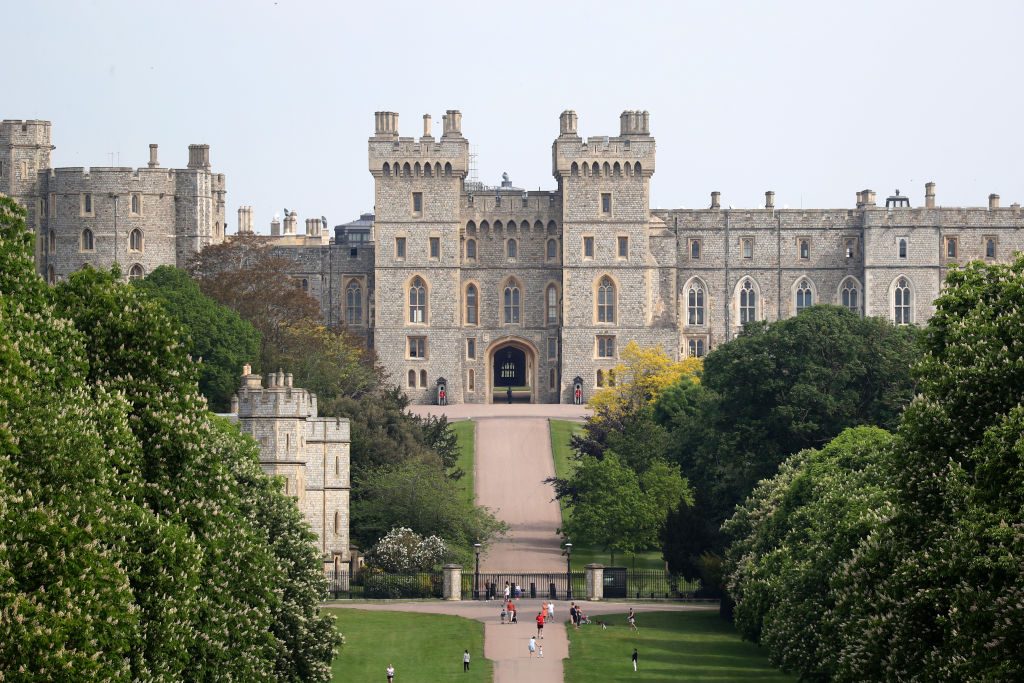
The king will be buried in Windsor Castle
After the king’s funeral at Westminster Abbey and the procession through the crowds, his body will be brought to Windsor Castle, about an hour’s drive from the British capital. Many senior royals have been buried in St. George’s Chapel inside the castle for centuries, including Queen Elizabeth II, Prince Philip, the Queen Mother and Princess Margaret. The chapel is open to visitors, so royal fans will have a chance to pay their respects in the following months and years in person.
Interestingly, St. George’s Chapel is not just the final resting place of the royal family. It’s also where Prince Harry and Meghan Markle tied the knot in 2017, and where King Charles and Camilla received a religious blessing by the Archbishop of Canterbury after their civil ceremony in 2005.
About the experts
|
Why trust us
Reader’s Digest has published hundreds of stories on the British royal family, providing a behind-the-scenes look at the fascinating facets of the monarchy. We regularly cover topics including the latest royal news, the history and meaning behind time-honored traditions, and the everyday quirks of everyone’s favorite family members, from Queen Elizabeth’s daily snack to Prince William’s confessions about his home life. We’re committed to producing high-quality content by writers with expertise and experience in their field in consultation with relevant, qualified experts. We rely on reputable primary sources, including government and professional organizations and academic institutions as well as our writers’ personal experiences where appropriate. For this piece on what happens when King Charles dies, Astrid Hofer tapped her experience as a London-based journalist with more than 20 years of experience covering topics including the British royal family. We verify all facts and data, back them with credible sourcing and revisit them over time to ensure they remain accurate and up to date. Read more about our team, our contributors and our editorial policies.
Sources:
- Nicoletta Gullace, royal expert and associate professor of history at the University of New Hampshire; interview, Feb. 8, 2024
- Marlene Koenig, royal expert and author of Queen Victoria’s Descendants; interview, Feb. 9, 2024
- Metro: “Why is it called Operation Menai Bridge?”
- Newsweek: “‘The Crown’: What happens when a member of the royal family dies?”
- Gov.uk: “Flag flying guidance following the death of Her Majesty The Queen”
- Gov.uk: “The demise of Her Majesty Queen Elizabeth II: National mourning guidance”
- Sky News: “David Beckham in tears as he views queen’s coffin after queueing for 13 hours”
- Royal.uk: “Mourning and condolence arrangements at the royal residences”
- Royal.uk: “St George’s Chapel”
- Independent: “Princess Diana: Looking back at the monarchy’s worst week in living memory”
- Reuters: “As national mourning period ends, 250,000 viewed Queen’s lying-in-state”




















